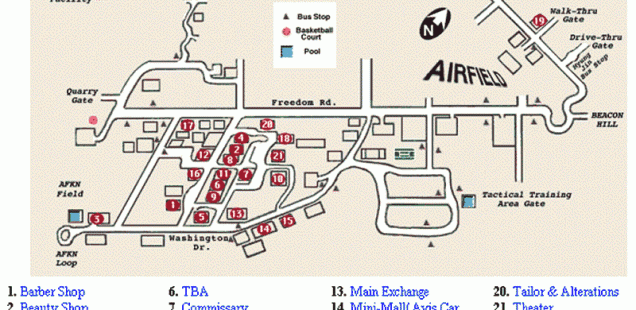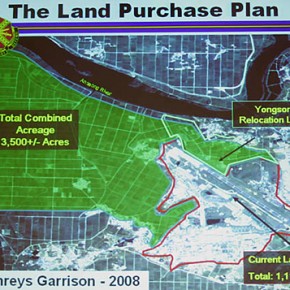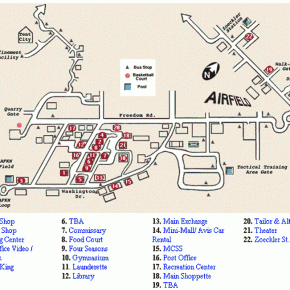
미8군6기병여단(캠프험프리)- 한글2005/12/22 402, 2002/12/13 330
http://www.globalsecurity.org/military/agency/army/6cav.htm
6th Cavalry Brigade (Air Combat)
“Blackhorse” / “Silent Thunder”
On 16 June 2005, the 6th Cavalry Brigade was inactivated reflagged as the 2nd Combat Aviation Brigade. The new unit took over responsibilities both for providing aviation support to the 2nd Infantry Division and to the Eighth US Army, replacing both the 6th Cavalry Brigade and the 17th Aviation Brigade. 1st Squadron, 6th Cavalry was subsequently inactivated, later being ractivated as part of the 1st Combat Aviation Brigade, 1st Infantry Division. 3rd Squadron, 6th Cavalry was reassigned to the new 2nd Combat Aviation Brigade.
The 6th Cavalry Brigade’s mission was to defends Osan, Kunsan, and Suwon Airbases from TBM attack in order to preserve air combat power and, on order, transition to hostilities, deploy to wartime locations, and conduct attack helicopter operations to prevent penetrations of the FEBA system. It would also, on order, conducts overwater attacks along the flanks of CFC to prevent infiltration of the Republic of Korea and conducts aviation operations in the Corps AO to set the conditions for the destruction of North Korea’s military capability.
In a wartime scenario, the 6th Cavalry Brigade was to conduct Attack Helicoper Operations as the reserve for the CINC CFC in support of the overall campaign plan. They would provide the warfighting capabilities within Area III. The 6th Cavalry Brigade was headquartered at Camp Humphreys. The 1st and 3rd Squadrons, 6th Cavalry Regiment consisted of AH-64 Attack Helicopters and were located at Camps Eagle and Humphreys respectively. The 1st Battalion, 43rd Air Defense Artillery (equipped with the Patriot missile) was attached to the Brigade and was to defend the skies from battle positons across the penninsula. Camp Eagle was the most modern and newest installation within the Republic of Korea during the 1990s and supported the 1st Squadron, 6th Cavalry. Other units at Camp Eagle included G/52nd Aviation, 194th Maintenance Company , 607th Weather Squadron OLB Detachment 2, USAF; 520th Maintenance Company (MST), and Lockheed Martin’s in country representatives.
Operational fires were distinct from fire support. They were planned “top down” to accomplish operational objectives. The Army operational-level commander was the critical link for coordination of joint support for Army operations and Army support for joint operations. The manning, training and equipping of an in-place deep operations division within G3 delivered the required capability to prosecute the Army commander’s role in counterfire with C2 and battlefield visualization techniques that mesh the doctrinal deep operations pieces together. The plan used the 6th Cavalry Brigade’s Apache helicopters, as well as the fire control elements at the Hardened Tactical Air Coordination Center at Osan Air Base, supporting US corps and divisions and the ROK First and Third Armies. Additionally, there was a newly capable Deep Operations Coordination Center that is responsible for situational awareness, controlling and targeting.
Apache pilots of the 6th Cavalry Brigade at Camp Humphreys near Pyongtaek, 70 kilometers south of Seoul, flew several hundred hours a year, twice as much as Apache pilots in the United States. During night training, Apache crews often flew at 225 kilometers an hour among islets off South Korea’s east and west coasts, 40 meters above the water.
The 1st Cavalry Division conducted annual ‘Warfighter’ exercises with a simulated scenario that tested the coordination and synchronization of moving units, which included 1-6th Cavalry from Camp Eagle and 3-6th Cavalry from Camp Humphreys, and the 1st Cavalry Division and III Corps out of Fort Hood, Texas, for a ‘deep attack.’ The operations were conducted from the 6th Cavalry Brigade Tactical Operations Center, in communication with Fort Hood. During all situations, 6th Cavalry Brigade acted as the subordinate unit for III Corps during the “war.” The Deep Operations Coordination Cell controled the movement of the 3 ‘attack’ helicopter squadrons (those equipped with Apaches), one air assault helicopter squadron (equipped with Blackhawks), and one medium-lift helicopter battalion (equipped with Chinooks) through the Corps Battle Simulation system.
The 6th Cavalry Brigade (not to be confused with the 6th Cavalry Regiment) was first constituted on 21 April 1942 in the Army of the United States as Headquarters and Headquarters Detachment, 6th Tank Group and activated on 23 April 1942 at Camp Bowie, Texas. The unit was reorganized and redesignated on 1 February 1944 as Headquarters and Headquarters Company, 6th Armored Group and inactivated on 22 October 1945 at Camp Miles Standish, Massachusetts. It was disbanded on 2 July 1952.
In the summer of 1974, the Army made the decision to implement one of the recommendations of the Howze Board, and created an air cavalry combat brigade. The 2nd Brigade of the 1st Cavalry Division, Commanded by Colonel Charles D. Canedy, was reflagged as the 6th Cavalry Brigade (Air Combat). The unit was officially reconstituted on 21 February 1975 in the Regular Army as Headquarters and Headquarters Troop, 6th Cavalry Brigade, and activated at Fort Hood, Texas. While at Hood, the Brigade was a test bed for new concepts involving the employment of attack helicopters on the modern battlefield. In the fall of 1990 2 of the Brigade’s subordinate units were deployed on Operation Desert Shield/Desert Storm.
In late 1995, the 1st and 4th Squadrons, 6th Cavalry were again deactivated, leaving only the 3rd Squadron, 6th Cavalry at Fort Hood. At the same time the 6th Cavalry Brigade received orders to move its flag from Fort Hood to the Republic of Korea. This move was accomplished in July of 1996. The 6th Cavalry Brigade stood up its headquarters at Camp Humphreys, Korea on 24 July 1996. To augment the Brigade, the 5th Battalion (Attack), 501st Aviation Regiment was reflagged as 1st Squadron, 6th Cavalry Regiment, which was assigned to the 6th Cavalry Brigade in July 1996.
In December 1996, the 1st Battalion, 43rd Air Defense Artillery was assigned to the 6th Cavalry Brigade. This addition to the brigade created a unique organization that provided the Commander in Chief, United Nations Command, Combined Forces Command and United States Forces Korea with critical force protection assets, as well as, lethal deep strike capability.
As of early 2001 there were 48 Apaches in South Korea. The third Korea-based unit of 24 craft, the 1st Battalion, 2nd Aviation Regiment, part of the 2nd Infantry Division’s Aviation Brigade, returned in late 2001 from the United States with an upgraded version of the AH-64 helicopter. In the Korean theater, the 3 Apache battalions were dedicated to missions critical to the OPLAN: support of 2nd Infantry Division operations (1-2nd Aviation), and anti-special operations forces (anti-SOF) and deep attack operations (1-6th and 3-6th Cavalry). Although the DPRK Scud Belt was within range of Combined Forces Command (CFC) attack helicopters, it was highly unlikely that an attack helicopter battalion would be dedicated solely to Theater Missile Defense (TMD) operations due to prioritization. Given the combat power of the attack helicopter units and the criticality of their assigned missions, the likelihood that one of these essential missions was be replaced by TMD was extremely slim.
The 1st Battalion, 43rd Air Defense Artillery was reassigned to the 35th Air Defense Brigade, an element of Eighth US Army in December 2004. On 16 June 2005, the 6th Cavalry Brigade was inactivated an reflagged as the 2nd Combat Aviation Brigade. This Multi-Functional Aviation Brigade (MFAB) was intended to serve the reduced US forces in Korea, providing aviation support to the 2nd Infantry Division as it had previously and to the rest of Eighth US Army in the place of the 6th Cavalry Brigade and the 17th Aviation Brigade. The newly consolidated aviation unit included Apache Longbow attack helicopters, UH-60 Blackhawk utility helicopters, CH-47 Chinook medium lift helicopters and manages the Eighth US Army’s C-12 Huron detachment. 1st Squadron, 6th Cavalry was inactivated and reactivated as part of the 1st Combat Aviation Brigade, 1st Infantry Division, while the 3rd Squadron, 6th Cavalry was initially assigned to the new 2nd Combat Aviation Brigade, 2nd Infantry Division.
————————————————————————————-
미8군6기병여단(캠프험프리)-영문
쉽게 풀어보는 군사용어 <13> 기병 없는 기병여단
오랫동안 한반도 안보를 지키는 데 공헌해 온 미 육군17항공여단이 내달 16일 해체된다는 소식이 전해졌다.(본지 4월16일자 1면)
예하 부대 중 일부는 미국으로 재배치되고 나머지는 경기도 평택 캠프 험프리에 있는 미 육군6기병여단에 일시 배속됐다가 2사단 예하 2항공여단으로 재배치될 예정이다.
이 기사에 등장하는 주한 미 육군6기병여단(騎兵旅團·Cavalry Brigade)의 정체는 무엇일까.
이 부대는 현재 이름에만 기병이 들어 있을 뿐 실제 말(馬)을 탄 기병들로 구성된 부대는 아니다. 현재 6기병여단은 헬리콥터를 보유한 육군항공여단의 일종임에도 부대 이름에 기병이 들어 있는 것은 부대의 역사 때문이다.
6기병여단의 뿌리는 미국 남북전쟁이 진행 중이던 1862년에 창설된 6기병연대. 이때의 기병연대는 실제로 말을 탄 기병으로 구성된 부대였다.
연대는 창설 이후 안티탐(Antietam) 전투, 게티즈버그(Gettysburg) 전투 등 남북전쟁의 상징적인 주요 전투에 빠지지 않고 참전했다. 전쟁이 끝난 이후 6기병연대는 미국 서부로 이동, 인디언 부족들과의 기나긴 전투를 치렀다.
1930년대 후반이 되면서 6기병연대에서 말이 점차 사라지게 됐다. 전투기·전차 등 신무기가 출현한 현대화한 전장에서 말이 더 이상 의미가 없어졌기 때문이다. 결국 6기병연대도 전차·장갑차를 보유한 기갑부대로 부대 성격이 바뀌었다.
기갑부대로 부대의 전통을 이어오던 6기병연대가 다시 한번 큰 변화를 맞이한 것은 1974년이다. 공격헬기로 구성된 육군항공여단을 새롭게 창설하면서 부대 명칭을 6기병여단으로 정한 것. 6기병연대의 오랜 전통을 계승하는 차원에서 6항공여단 대신 6기병여단이라는 이름을 사용한 것이다.
이처럼 현재의 6기병여단은 공격헬기로 구성된 육군항공여단의 일종이며 기병과는 아무런 상관이 없다. 6·25전쟁에도 참전한 제1기병사단의 경우도 마찬가지다. 부대 전통을 계승하는 차원에서 기병이라는 이름을 사용할 뿐 기병과는 무관한 기갑사단의 일종이다.
http://news.media.daum.net/snews/society/media/200509/30/mediatoday/v10313614.html
2005년 9월 30일 (금) 09:16 미디어오늘
미군, 오산·평택기지 공개
미군 “확장이전 완료되면 최상의 기지”…시민사회단체 “동북아 평화 심각하게 위협”
[미디어오늘 김종화 기자] 경기도 평택시 팽성읍 주민들이 평택미군기지확장저지 범국민대책위를 중심으로 국방부의 강제토지수용 등 기지확장이전정책을 강력반대하고 있으나 미군은 한미연합토지관리계획(Land Partnership Plan) 수정협의안 등에 따라 관련정책을 계속 추진하고 있는 것으로 확인됐다.
경기도 평택 K-6 미군기지(캠프 험프리) 마이크 제이 텔리엔토 주니어 사령관(Colonel Mike J Taliento Jr.)은 29일 기지에서 “2008년까지 오산과 대구·부산의 2개 허브, 군산 항공허브로 주한미군을 재편할 것”이라며 “확장이전이 완료되면 미군과 한국군 모두에게 캠프험프리가 최상의 기지가 되는 것을 목표로 한다”고 밝혔다.
▲ 경기도 평택 K-6 미군기지의 텔리엔토 사령관이 29일 기지를 방문한 인터넷-지역 언론인들에게 미군기지 재배치 계획에 대해 브리핑하고 있다. ⓒ이창길 기자 photoeye@mediatoday.co.kr
그는 주민 반발에 대해 “(한국) 국방부가 이미 확장부지 60% 이상을 매입했다고 들었다. (기지확장이전부지) 편입지역 주민들에게는 매우 힘든 시간이란 것을 잘 알고 있고 우리도 민감하게 생각한다”면서도 “여러번 데모가 있었지만 우리는 지역 유지들과 협의하면서 지역사회와 협력관계를 유지할 것”이라고 말했다. 그는 △4, 5년 내 평택지역에 50억불 투자 △2700여명의 직원 이동 △군인 및 군인가족 3000여명의 주택수요 창출 등을 ‘평택을 위한 기회’로 꼽았다.
캠프험프리는 현재 화인건설 등이 확장이전 청사진에 따라 각종 건물을 신축하고 있다. 미군은 향후 C-17 전략수송기 활주로를 닦음과 동시에 기지내 철도도 놓을 예정이며, 18홀의 골프장과 단국대학교가 디자인한 공원도 지을 계획이다.
▲ 한미 연합토지관리계획 개정협정 및 용산 미군기지 이전협정에 따라 평택 미군기지에 편입될 예정인 지역이 지도에 녹색으로 표시되어 있다. ⓒ이창길 기자 photoeye@mediatoday.co.kr
텔리엔토 사령관은 “올해 6월 현재 136만평의 캠프험프리가 2008년이 되면 약428만평으로 늘어날 것”이라며 “50년이 지나도 흔들리지 않는 기반위에 100년뒤에도 끄덕없는 각종 건물들을 세울 것”이라고 밝혔다.
같은 날 오산 미공군기지 데이빗 스미스 대위(Captain David Smith)는 F-117A 스텔스 전폭기(나이트호크)와 관련해 “스텔스기가 한국에 착륙했다는 것은 알지만 여기(오산공군기지)에 내린 적도 없고 지금도 없다”고 전면부인했다. 그러나 연합뉴스 등 여러 언론들은 “미국 뉴멕시코주 홀로만 공군기지에 배치됐던 F-117A 스텔스 전폭기 15대와 250여명의 장병들은 6월초 오산 및 군산 공군기지에 순차적으로 전개를 완료했다”고 보도했었다.
▲ 오산 미공군기지 공보담당 데이빗 스미스(오른쪽) 대위가 29일 기지 현황에 대한 브리핑을 마치고 기자들의 질문에 답변하고 있다. ⓒ이창길 기자 photoeye@mediatoday.co.kr
스미스 대위는 이날 기자 브리핑에서 기지내 패트리어트 미사일을 공개하면서도 정확한 보유대수를 묻는 질문에 “잘 모르겠다”는 답변으로 일관했다. 그는 A-10 대지(對地) 공격기의 열화우라늄탄 장착여부와 관련해 “훈련중에는 절대 사용하지 않는다”며 “전시에 사용한다는 시나리오만 가지고 있다”고 말했다. 앞서 국회 국방위원회 송영선(한나라당) 의원은 22일 국정감사 자료를 통해 “패트리어트 지대공(地對空) 미사일은 50기(380발)에서 60기(500발)로, A-10 대지공격기는 20대에서 25대로 각각 늘어났다”고 밝힌 바 있다.
이날 기자들에게 기지를 공개한 미군 지휘관들은 미군의 ‘좋은 이웃’ 프로그램과 환경보존정책을 강조했다. 특히 텔리엔토 사령관은 “현재도 늪지대를 지키고 있고 약428만평으로 기지가 확장될 미래에도 환경을 보존할 정책을 가지고 있다”며 “(기지로 편입될 팽성읍 대추리 논 등을 가리키며) 미래에는 더 환경적으로 가꿀 수 있을 것”이라고 강조했다.
그러나 23일 환경부가 국회 환경노동위 김형주 의원(열린우리당)에게 제출한 자료에 따르면 춘천 캠프페이지를 비롯해 환경부 조사가 완료된 전국 15개 미군기지 중 14곳의 토양오염이 국내법상 우려기준을 초과한 것으로 드러났다. 앞선 9일 김제남 녹색연합 사무처장은 ‘미군기지 환경과 인권문제 해결을 위한 국제 심포지엄’에서 “미군이 늘 말하는 대로 한국의 환경을 잘 보전하고 있다면 그것을 널리 알리고 이해시키는 것이, 미군을 왜곡시킨다는 한국 언론과 반미세력을 넘을 수 있는 길”이라고 ‘한·미 양측 환경분과위원장이 동의하지 않을 경우 언론과 대중에 자료를 공개할 수 없다’는 SOFA(한미주둔군지위협정) 조항을 꼬집은 바 있다.
▲ 인터넷 및 지역 언론인들은 주한 미대사관이 마련한 오산-평택 미국기지 탐방 프로그램의 일환으로 29일 오산 미공군기지를 방문했다. 버스 차창 밖으로 오산 미공군기지 안에 조성되어 있는 골프장을 바라보고 있다. ⓒ이창길 기자 photoeye@mediatoday.co.kr
한편 미군기지확장반대 평택대책위 강상원 집행위원장은 미디어오늘과의 통화에서 “캠프험프리 지휘관을 만날 생각도 없지만 만나자는 제안이 들어온 적도 없다. 여중생 사망사건때도 마찬가지지만 미군은 우리 국민들의 의견을 중요하게 생각하지 않고 있다”며 “정부 계획이 수정되거나 폐지되지 않는 한 제2의 부안사태같은 주민들과의 정면충돌이 불가피할 것으로 보인다”고 말했다.
▲ 29일 평택 K-6 미군기지 철조망 너머로 보이는 팽성읍 대추리의 너른 들녁에서 나락이 누렇게 익어가고 있다. 정부는 평택미군기지 확장에 반대하는 지역 주민들과의 협의매수를 성사시키지 못해 강제토지수용 절차를 추진하고 있다. ⓒ이창길 기자 photoeye@mediatoday.co.kr
이날 평화와 통일을 여는 사람들(상임대표 문규현 홍근수)도 “미군재배치로 인한 평택미군기지 확장은 평택 주민생존권 말살 행위이자 한반도 및 동북아 평화를 심각하게 위협하는 일”이라며 “한반도 평화와 국민의 이익, 주민 생존권을 위해 용산 등 미군재배치사업을 즉각 중단하라”고 촉구했다.

